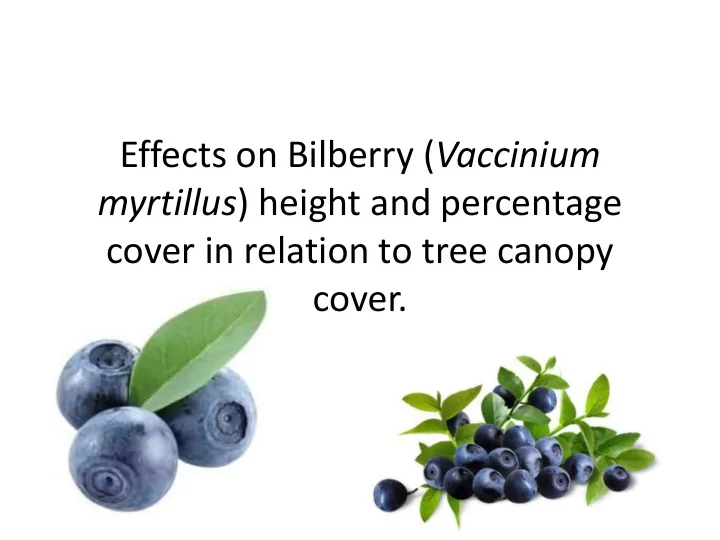

Effects on Bilberry ( Vaccinium myrtillus ) height and percentage cover in relation to tree canopy cover.
• Deciduous herb with small pink flowers and purple-black berries • Grows in acidic, nutrient poor soils • Temperate or subarctic regions • Dominant ground flora across boreal forest • Tolerance to Scots Pine ( Pinus sylvestris ) allelopathic toxins
Importance • Vital food source to many organisms • Berries eaten widely by humans • Important forage to moose during summer and autumn
Method • Ljørdalen, Gravberget and Plassen • Each site has 2 sampling areas; one with experimental treatments (A) and one control (B)
• 10-11 quadrates of 500 m x 500 m • 16 sampling plots, 4 along each side with 100 m between them • Centre of each plot marked with a white pole
• North, east, south and west • Canopy cover reading taken facing away from the central point; measured at elbow height • Bilberry coverage was estimated • No. flowers/buds were counted • Each corner bilberry plant closest to each corner was measured in height and whether it had been browsed in winter, summer and by insects.
• Our results support the conclusion by Atlegrim & Sjöberg (1996), that increased light exposure decreases bilberry cover. • Increased sunlight may dry bilberry roots quicker • Competition might also increase with more sunlight.
• Bilberry affects most living things in the boreal forest. • Can aid in silvicultural decision making in boreal forest habitats
Recommend
More recommend